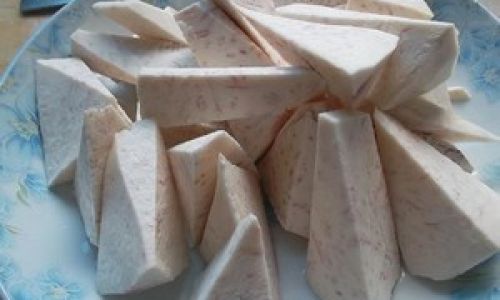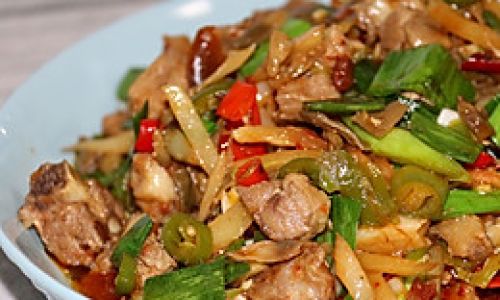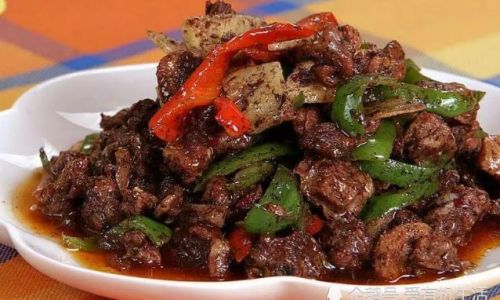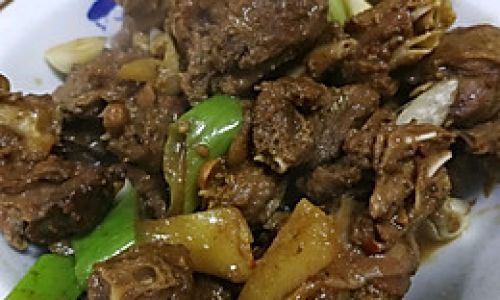Table of content
- 1 What Makes Lipu Taro Unique?
- 2 Selecting and Storing Lipu Taro
- 1 Essential Ingredients
- 2 Equipment Checklist
- 1 Handling Taro Safely
- 2 Steaming the Taro
- 1 Aromatic Base
- 2 Introducing the Taro
- 3 Crafting the Sauce
- 4 The Cornstarch Slurry
- 5 Finishing with Scallions
- 1 Vegan Adaptation
- 2 Spicy Kick
- 3 Umami Boost
- 1 My Taro Is Mushy!
- 2 The Sauce Is Too Thin
- 3 Bland Flavor
Introduction
Lipu Taro, a prized variety of taro rooted in the fertile soils of Guilin, China, has captivated food enthusiasts for centuries with its buttery texture and subtle sweetness. When paired with the fresh, pungent aroma of scallions, this humble root vegetable transforms into a dish that balances earthy richness and vibrant herbal notes. This article delves into the art of crafting Scallion-Flavored Lipu Taro, a recipe that honors tradition while inviting modern adaptations. Whether you’re a seasoned home cook or a curious novice, this guide will equip you with the techniques, tips, and cultural insights to master this beloved dish.
Chapter 1: The Star Ingredient—Lipu Taro
1 What Makes Lipu Taro Unique?
Grown in the mist-shrouded mountains of Guangxi Province, Lipu Taro (Colocasia esculenta) is renowned for its creamy consistency and low fiber content, which sets it apart from other taro varieties. Its large, oval-shaped tubers boast a purple-hued flesh that turns golden when cooked, offering a visual and gustatory delight. The region’s volcanic soil and humid climate impart a distinctive mineral sweetness, making Lipu Taro a coveted ingredient in both savory and sweet preparations.

2 Selecting and Storing Lipu Taro
When shopping for Lipu Taro, look for tubers that are firm, heavy for their size, and free of soft spots or mold. The skin should be smooth, with a mottled brown and gray patina. Avoid specimens with green tinges, as this indicates exposure to sunlight and may result in a bitter taste. Store unpeeled taro in a cool, dry place for up to two weeks. Once peeled, wrap it tightly in plastic and refrigerate for no more than three days to prevent discoloration.
Chapter 2: Assembling Your Culinary Arsenal
1 Essential Ingredients
- 500g Lipu Taro: Peeled and cut into 2cm cubes.
- 100g Fresh Scallions: Separate white and green parts; finely chop both.
- 30g Ginger: Minced for aromatic depth.
- 2 Cloves Garlic: Thinly sliced for mild pungency.
- 2 tbsp Vegetable Oil: Neutral oil like peanut or canola works best.
- 1 tbsp Sesame Oil: For nutty undertones.
- 1 tbsp Soy Sauce: Use premium light soy sauce for saltiness without overwhelming the taro’s flavor.
- 1 tsp Oyster Sauce: Adds umami richness.
- 1 tsp Sugar: Balances the dish’s savory profile.
- 1/4 tsp White Pepper: A hint of warmth.
- 1 tbsp Cornstarch: Mixed with 2 tbsp water to create a slurry.
- 1/4 cup Chicken or Vegetable Broth: For deglazing and moisture.
- Optional Garnishes: Toasted sesame seeds, chili flakes, or cilantro.
2 Equipment Checklist
- Sharp Knife: Essential for precise taro cubing.
- Steamer Basket: To cook taro until tender.
- Wok or Large Skillet: For stir-frying.
- Heatproof Spatula: Preferably wooden or silicone to avoid scratching the wok.
- Mixing Bowls: For preparing the sauce and cornstarch slurry.
Chapter 3: The Preparation Ritual
1 Handling Taro Safely
Taro contains calcium oxalate crystals, which can cause irritation to the skin and throat. Always wear gloves when peeling and cutting taro, and rinse your hands thoroughly afterward. Soaking taro cubes in cold water with a splash of vinegar for 10 minutes can neutralize any residual irritants.
2 Steaming the Taro
Steaming is the first critical step to achieving the dish’s signature texture. Place the taro cubes in a steamer basket set over boiling water. Steam for 15–20 minutes, or until a knife pierces the flesh with minimal resistance. Avoid overcooking, as mushy taro will disintegrate during stir-frying.
Chapter 4: The Symphony of Flavors—Cooking Techniques
1 Aromatic Base
Heat the vegetable oil in a wok over medium heat. Add the white parts of the scallions, ginger, and garlic. Sauté until fragrant (1–2 minutes), taking care not to burn the garlic, which imparts bitterness.
2 Introducing the Taro
Gently add the steamed taro cubes to the wok, tossing lightly to coat them in the aromatic oil. The goal here is to caramelize the edges slightly without breaking the cubes. Use a gentle stirring motion, akin to folding egg whites into batter.
3 Crafting the Sauce
In a small bowl, whisk together soy sauce, oyster sauce, sugar, white pepper, and 2 tablespoons of broth. Pour this mixture over the taro, stirring to ensure even coating. Allow the sauce to reduce slightly, concentrating its flavors.
4 The Cornstarch Slurry
For that coveted glossy finish, drizzle the cornstarch slurry into the wok while stirring continuously. The sauce will thicken within 30 seconds, clinging to the taro cubes like a velvety embrace.
5 Finishing with Scallions
Remove the wok from heat and fold in the green parts of the scallions. The residual warmth will wilt them slightly, preserving their vibrant color and fresh flavor. A final drizzle of sesame oil elevates the dish with its toasty aroma.
Chapter 5: Plating and Presentation
Transfer the taro to a serving dish, garnishing with toasted sesame seeds or a sprinkle of chili flakes for visual contrast. Serve immediately as a standalone dish or alongside steamed rice, grilled meats, or pickled vegetables. The interplay of textures—creamy taro, crisp scallions, and a glossy sauce—makes this dish equally suited to family dinners and banquet tables.
Chapter 6: Mastering Variations and Substitutions
1 Vegan Adaptation
Replace oyster sauce with mushroom-based stir-fry sauce and use vegetable broth. The earthiness of mushrooms complements the taro’s natural sweetness.

2 Spicy Kick
Introduce sliced fresh chilies or a spoonful of chili crisp during the aromatics stage for a fiery twist.
3 Umami Boost
A teaspoon of fermented black beans or a splash of Shaoxing wine can add complexity, though these alter the dish’s traditional profile.
Chapter 7: Troubleshooting and Tips
1 My Taro Is Mushy!
Oversteaming is the culprit. Test doneness early and often. If using a pressure cooker, reduce cooking time to 5–7 minutes.
2 The Sauce Is Too Thin
Cornstarch slurry is your ally. Prepare an extra batch and add it incrementally while stirring.
3 Bland Flavor
Amp up the seasoning with a pinch of salt or a splash of dark soy sauce for color. Ensure the taro is well-coated during stir-frying.
Chapter 8: The Cultural Tapestry of Lipu Taro
Beyond its culinary appeal, Lipu Taro holds cultural significance in Guilin. Revered during the Qingming Festival as an offering to ancestors, it symbolizes prosperity and familial bonds. The dish’s preparation, often a communal activity, reflects the importance of shared meals in Chinese culture.
Chapter 9: Health and Nutrition
Lipu Taro is a nutritional powerhouse, rich in dietary fiber, potassium, and vitamins C and E. Its resistant starch aids digestion, while the absence of saturated fats makes it a heart-healthy choice. Scallions contribute antioxidants and anti-inflammatory compounds, rounding out the dish’s health benefits.
Conclusion: A Dish That Transcends Borders
Scallion-Flavored Lipu Taro is more than a recipe—it’s a bridge between tradition and innovation, simplicity and sophistication. By mastering its preparation, you join a lineage of cooks who have transformed a humble root into a culinary masterpiece. Whether served at a banquet or a weeknight table, this dish invites dialogue, connection, and appreciation for the art of cooking. So, don your apron, gather your ingredients, and embark on a journey that begins in the mountains of Guilin and ends in the comfort of your kitchen.






0 comments